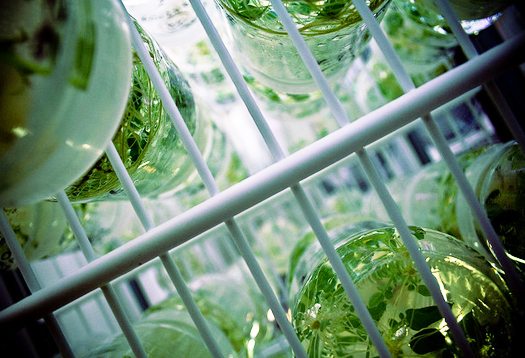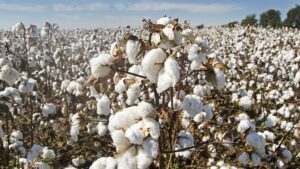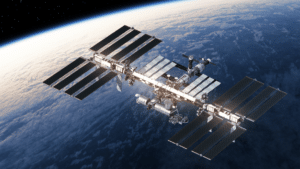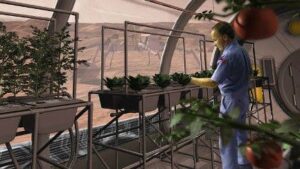Looking for plants to feed interplanetary space travelers.
Speeding along at 4.8 miles per second at 250 miles above the earth, plant scientists aboard the International Space Station (ISS) are doing plant research to benefit life on earth.
In 2005, Congress designated the research platform aboard the ISS a U.S. National Laboratory providing space research and development access to a broad range of commercial, academic and government users. The Center for the Advancement of Science in Space (CASIS), a nonprofit, nongovernment organization, manages the space-bound lab.
“Since 2011, CASIS has selected more than 200 research projects with a growing community of researchers taking their scientific dreams beyond the limits of gravity,” says former astronaut Greg Johnson, CASIS president and executive director.
If humans are to ever colonize space, we’ll need to crack one crucial challenge: how to feed ourselves for long periods away from Earth, he says.
Can Seeds Survive Space Radiation?
Astrobiologists David Tepfer and Sydney Leach at the National Institute of Agronomic Research, Versailles, France, are investigating how seeds would do back on Earth after spending extended periods on the ISS. They sent tobacco, Arabidopsis and morning glory seeds on a 558 day space journey.
Their seeds were placed on the outside of the station, in the dead of space, rather than inside. The goal was to understand not only the effects of long-term radiation exposure, but a bit about the molecular mechanisms of those effects
“Studying plant behavior in the foreign environment of space allows increased understanding of fundamental, earth-bound plant biology,” they wrote in their report in September.
A second, identical set of seeds was on the ISS, but shielded completely from UV radiation. In addition to normal Arabidopsis, they sent two GM strains coated with either low or nonUV-protective chemicals. They also sent purified DNA and purified flavonoids. This gave the researchers a wide range of scenarios by which to understand the effects of space and microgravity on seeds.
Back on Earth, the shielded seeds inside the ISS lab performed the best; more than 90 percent of them germinated. Next came the seeds that had been exposed to UV radiation for one month in the laboratory, with over 80 percent of them germinating.
For the space-traveling seeds outside the spacecraft, more than 60 percent of the shielded seeds germinated. But for the fully UV-exposed seeds, a mere 3 percent of them germinated.
“Gravity-sensing mechanisms within plants are critical to their survival on Earth,” the researchers wrote. “Adaptive processes of plants during spaceflight may thus advance fundamental studies and agricultural applications such as improved crop yield, increased biofuel production and development of new varieties.”
Better Cotton from Space
The Target Corporation – the second-largest discount store retailer in the United States, and CASIS in July announced the ISS Cotton Sustainability Challenge. The initiative will provide funding to scientists and researchers who can come up with ways to utilize the ISS to make cotton farming more effective and sustainable.
While it might seem unlikely that an orbiting laboratory could assist in better Earth-based farming practices, the creators of the challenge believe the station could help in the effort.
In the contest announcement, challenge officials suggest the station’s high-altitude, microgravity vantage point could “provide the agricultural community unique perspectives on sustainable crop production and water usage.”
The winning proposal(s) will receive up to $1 million in funding and support to send their research to space.













